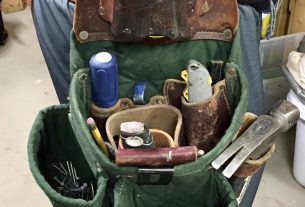Darby tools are a type of smoothing tool used in construction and woodworking. They are designed to scrape away excess material from surfaces, leaving them smooth and level. If you’re in the market for a darby tool, it can be tough to know which one is right for you. In this guide, we’ll take a closer look at darby tools and everything you need to know before making a purchase.
What is a Darby Tool?
A darby tool is a flat, rectangular piece of metal or wood that is used for smoothing concrete or plaster surfaces. It’s similar to a trowel, but instead of spreading the material, it scrapes away any excess. Darbies come in different sizes and materials, so it’s essential to choose the right one based on your needs.
Types of Darby Tools
There are several types of darby tools available on the market today. Some of the most popular include:
1. Wooden Darby – This type of darby is made from lightweight wood and is ideal for smoothing out concrete or plaster surfaces. Wooden darbies are easy to handle and provide excellent control.
2. Magnesium Darby – A magnesium darby is made from durable magnesium alloy and is lightweight yet incredibly strong. This type of darby is ideal for use with concrete and can handle heavy-duty jobs with ease.
3. Stainless Steel Darby – As the name suggests, this type of darby is made from stainless steel, making it extremely durable and long-lasting. It’s perfect for use with rough surfaces or when working with heavier materials.
4. Plastic Darby – A plastic darby is made from high-density polyethylene (HDPE), making it lightweight and easy to handle. It’s perfect for use with smaller jobs or when working with delicate materials.
Choosing the Right Darby Tool
When choosing a darby tool, there are several factors to consider. First, you need to determine the type of material you’ll be working with. If you’re working with concrete or other heavy-duty materials, a magnesium or steel darby is the best choice. However, if you’re working with delicate materials such as plaster or drywall, a wooden or plastic darby may be more suitable.
Another factor to consider is the size of the darby tool. Larger darbies are ideal for larger jobs but can be challenging to handle. On the other hand, smaller darbies are easier to handle but may not be suitable for larger projects.
Finally, consider the shape of the darby tool. Some darbies have rounded edges, while others have square edges. Rounded edges are perfect for smoothing out corners and tight spaces, while square edges provide better control over flat surfaces.
Using a Darby Tool
Using a darby tool is relatively simple but requires some practice to achieve excellent results. Here’s how to use a darby tool:
1. Apply your material – Whether you’re using concrete or plaster, apply your material evenly over the surface you want to smooth out.
2. Use your trowel – Use your trowel to spread the material around until it’s evenly distributed across the surface.
3. Use your darby tool – Once your material is evenly distributed, use your darby tool to scrape away any excess. Hold the darby at a slight angle and move it back and forth across the surface in long strokes.
4. Smooth out any imperfections – After using your darby tool, use a trowel or finishing brush to smooth out any imperfections that remain.
Darby Tool Maintenance
To keep your darby tool in top condition, it’s essential to clean it thoroughly after each use. Use warm soapy water and a soft-bristled brush to remove any debris or buildup. Once your tool is clean, dry it off and store it in a dry, safe place.
Conclusion
Choosing the right darby tool can make all the difference when it comes to achieving a smooth and level surface. Whether you’re working with concrete or plaster, there’s a darby tool out there that’s perfect for your needs. Consider the material you’ll be working with, the size of the job, and the shape of the darby tool before making a purchase. With the right darby tool in hand and some practice, you’ll be able to achieve professional-quality results every time.
References:
1. https://en.wikipedia.org/wiki/Darby_(tool)
2. https://www.bobvila.com/articles/how-to-use-a-darby/




